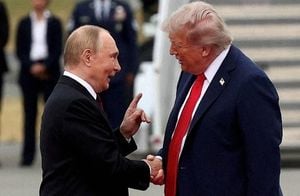India’s electric vehicle (EV) landscape is undergoing a seismic shift, marked by bold investments, shifting market dynamics, and a growing embrace of hybrid mobility solutions. In recent weeks, the country has witnessed major developments: Suzuki Motor’s record-setting $8 billion investment in its Indian operations, a rare earth supply crunch shaking up the electric two-wheeler leaderboard, and a renewed focus on range extenders as a pragmatic bridge to full electrification. Together, these changes are tilting the global EV market’s center of gravity toward Asia—and India is at the heart of it all.
Suzuki Bets Big on India’s EV Future
On August 27, 2025, Suzuki Motor unveiled its first all-electric SUV, the e-Vitara, rolling off the production line in Gujarat. This debut was more than just a product launch; it was a statement of intent. With India’s Prime Minister and top Japanese officials in attendance, the moment underscored the deepening industrial partnership between the two nations. According to MT Newswires, Suzuki’s $8 billion investment ranks among the largest EV bets in India to date, signaling the company’s commitment to making India a central pillar of its global electric vehicle strategy.
The e-Vitara won’t be available to Indian consumers just yet. Instead, Suzuki will export the SUV to overseas markets first, a decision driven by the high cost of batteries that currently makes local pricing uncompetitive. Suzuki, which already commands a formidable 40% share of India’s car market, is banking on India’s manufacturing scale and cost advantages to help it compete on the world stage. As battery prices decline over time, Suzuki hopes to bring affordable EVs to Indian buyers and drive local adoption.
This move is about more than just cars. It’s about positioning India as a launchpad for EV exports to Europe and beyond, and strengthening Asia’s role in the global electric vehicle supply chain. The integration of Japanese and Indian industrial ambitions is set to accelerate Asia’s momentum in this sector, as noted by MT Newswires.
Supply Chain Squeeze Reshuffles Two-Wheeler Market
While Suzuki’s investment grabbed headlines, India’s electric two-wheeler market was experiencing its own shakeup. In August 2025, a rare earth magnet supply crunch—critical for EV production—disrupted the pecking order among leading manufacturers. According to The Economic Times, Ather Energy surged ahead of Ola Electric in sales for the first time in months, propelled by ongoing supply-side disruptions and a shift in consumer sentiment.
From August 1 to August 27, Ola Electric sold 13,688 vehicles, capturing a 17.3% market share and slipping to third place. Ather Energy nudged ahead with a 17.9% share, while TVS Motor retained its commanding lead at 24.8%. Hero MotoCorp and Bajaj Auto rounded out the top five, but both faced mounting supply challenges. The disruptions were so acute that, back in July, Ather, Bajaj, and TVS had all warned of possible production cuts due to limited supplies from China.
The supply crunch has had ripple effects beyond sales numbers. Ola Electric, for example, recently received compliance clearance under the Production Linked Incentive (PLI) scheme for its Gen 3 scooters. At its first annual general meeting since going public, Ola’s shareholders approved a reallocation of IPO funds and a delay in spending timelines—moves widely seen as responses to the ongoing headwinds. As of August 26, Ola Electric’s shares closed at Rs 50.8 on the BSE, still well below the Rs 76 issue price. Meanwhile, Ather Energy shares closed at Rs 431.8, up 3.5% from the previous session.
Range Extenders: The Hybrid Bridge to Full Electrification
Amid these supply chain challenges and the high cost of batteries, the global EV sector is increasingly turning to range extenders—hybrid systems that combine electric propulsion with auxiliary power sources such as gasoline, ethanol, or hydrogen. As reported by AInvest, range extenders are emerging as a crucial bridge in the transition to full electrification, particularly as battery technology nears its physical limits and charging infrastructure remains patchy, especially in rural and emerging markets.
The numbers tell a compelling story. In China, plug-in hybrid electric vehicles (PHEVs) and extended-range electric vehicles (EREVs) accounted for 40% of all EV sales in 2024, up sharply from 15% in 2020. Chinese automakers like BYD and GWM are now exporting these technologies to Brazil and Southeast Asia, where charging infrastructure is still catching up. In India, range extenders are being adapted for two-wheelers and three-wheelers, providing a practical solution for last-mile connectivity—a critical issue in the country’s sprawling urban and rural landscapes.
Europe’s approach is more nuanced. PHEV sales in Germany rose by 12% year-over-year as of 2025, buoyed by regulatory flexibility under the EU’s 2025 Industrial Action Plan. Norway, on the other hand, has pushed aggressively toward 100% zero-emission vehicles by 2025, relegating PHEVs to a transitional role with a steady 3% market share. In Brazil, ethanol-based range extenders are gaining traction thanks to the country’s mature biofuel infrastructure.
Technological advancements are also driving the range extender market forward. Innovations such as lightweight fuel cell systems, AI-driven energy management, and modular designs are making integration into existing EV platforms easier and more cost-effective. A 2025 report by Custom Market Insights projects the global EV range extender market to grow at a 5.8% compound annual growth rate, reaching $4.36 billion by 2034. Companies like BYD, BMW, Toyota, Panasonic, Plug Power, Bosch, and Continental are leading the charge, while charging infrastructure providers such as ChargePoint and A Better Tomorrow continue to expand their networks in tandem with hybrid vehicle adoption.
India’s Startup Ecosystem and Tech Talent Surge
Amid the EV upheaval, India’s broader startup ecosystem is thriving. On August 28, an elite jury led by former G20 Sherpa Amitabh Kant convened in Bengaluru to select the winners of the 11th Economic Times Startup Awards (ETSA). These awards recognize entrepreneurial excellence across a range of categories, including startups built without external funding, social enterprises, comeback entrepreneurs, female founders, student startups, and top investors. The event reflects the resilience and innovation driving India’s business landscape, even as the startup world navigates a challenging global environment.
Recent funding rounds underscore this momentum. Mumbai-based banking infrastructure startup TransBnk secured $25 million to fuel its expansion into Southeast Asia and the Middle East. Kitchenware brand Cumin Co. raised $1.5 million to boost its enamel-based coating capacity and supply chain operations. Meanwhile, Urban Company launched a new home improvement sub-brand, Revamp, offering quick makeovers in major cities. And, as Cloudera CEO Charles Sansbury recently noted, India is rapidly becoming a global hub for tech talent, with its skilled workforce attracting multinational investment and innovation.
India’s EV revolution is not just about cars and scooters—it’s about supply chains, hybrid technologies, and a vibrant entrepreneurial ecosystem. As battery prices fall and supply bottlenecks ease, the country is poised to play a defining role in the next phase of the global electric mobility story.





